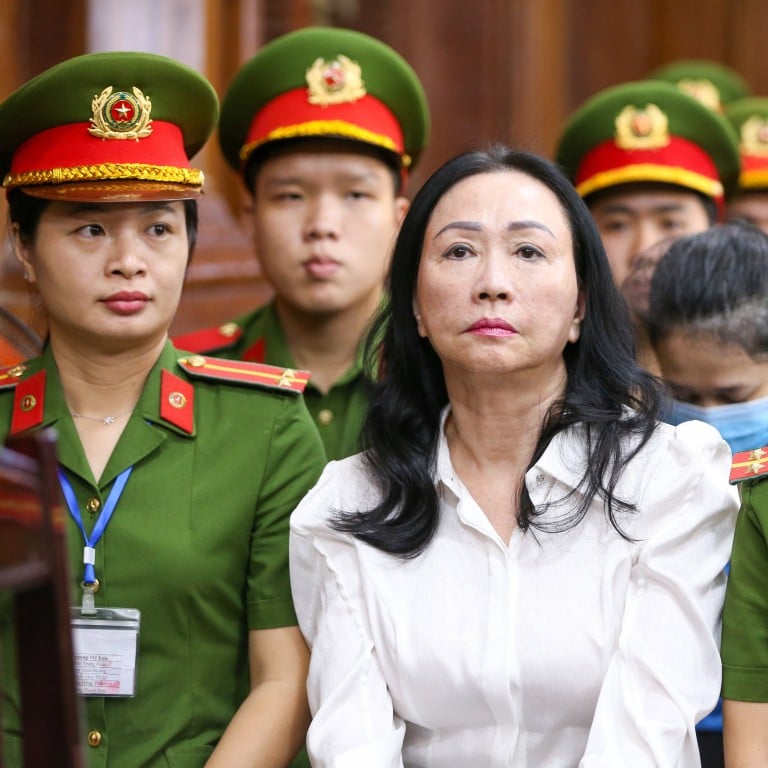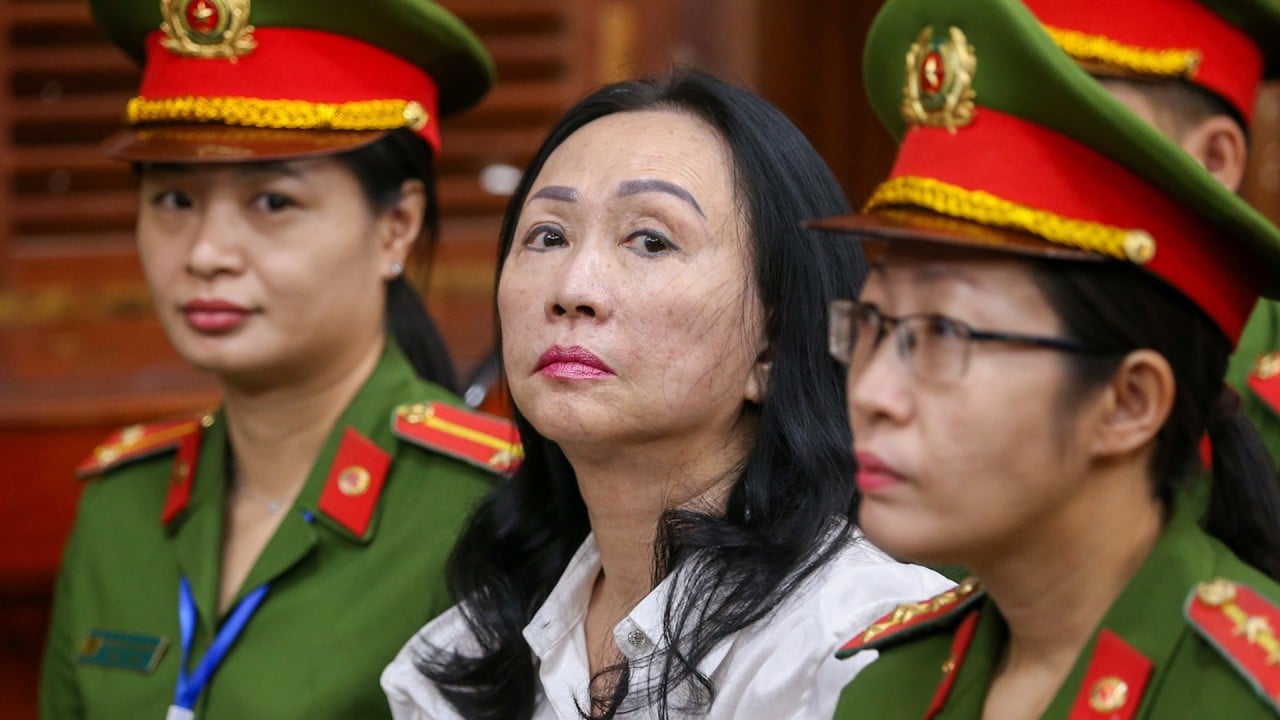
Thousands of Vietnamese lament life savings lost in nation’s largest financial scam
- A total of 42,000 victims have seen their savings and investments in SCB evaporate after the bank was embroiled in a US$12.5 billion fraud
- Vietnamese banks are vulnerable to fraud due to complex rules applicable to their operations, financial experts say
For many years, Kim Lien, a food stallholder in Ho Chi Minh City, served countless bowls of tofu soup and was able to squirrel away US$25,000 of her earnings.
But the 67-year-old watched her life savings vanish after she was persuaded by a bank employee to invest the amount into bonds that she barely understood.
Lien and 42,000 other victims have paid a huge price for trusting SCB with their investments.
“I just wanted to save my money at the bank. They told me about flexible savings that later on I know was a bond,” Lien told This Week in Asia. “All the bank officials were scammers. They stole my money.”
Vietnam political star’s downfall shocks nation: ‘who will be next president?’
Court documents shown during Lan’s hearing revealed that the fraud was enabled by corrupt bank managers and government officials, as well as auditing firms that were paid handsomely to oversee SCB’s financial accounts and flag any irregularities. The court has ordered the seizure of Lan’s properties for compensation, but it is unclear how much will be repaid to the victims.
Vietnamese banks are vulnerable to fraud and mismanagement due to complex rules applicable to their operations, according to financial experts.
Lan’s 160-page indictment attested to this with charges - mostly for corruption and violation of banking rules – levelled against 86 defendants including staff working at all levels of SCB and watchdog officials.
Vietnam would not be able to tackle corruption effectively “without more rigorous reforms in the check-and-balance system and the accountability mechanism”, Giang said.
The sky’s the limit? Start-up doyens back Vietnam to survive funding winter
Lan’s ability to embezzle billions of dollars has raised questions about collusion between business and political elites.
Prosecutors said Lan appointed trusted allies to key leadership positions at SCB, who were each paid monthly salaries ranging from US$8000 to US$20,000. Her fraud was facilitated by senior state officials, including a former inspector at Vietnam’s central bank, who was sentenced to life in prison for taking US$5.2 million in bribes.
Before her arrest in October 2022, Lan channelled US$44 billion in loans from SCB over a decade to finance her projects through shell companies under the banner of real estate giant Van Thinh Phat.
Between 2012 and 2020, SCB’s auditors – Ernst & Young Vietnam, Deloitte Vietnam, and KPMG Vietnam – failed to raise any red flags on the transactions. When the fraud was exposed at the time of Lan’s arrest, investigators said SCB incurred US$18 billion in accumulated losses following separate audits that were carried out.
“The three firms among the big four firms audited SCB and committed violations,” Vietnam Finance Minister Ho Duc Phoc said at a legislature hearing on 18 March. The court has ordered prosecutors and police to investigate the accounting giants over their certifications of SCB’s books.
Lan has repaid part of the loans but a total of US$27 billion including interest is classified as non-recoverable. She asked her husband Chu Nap Kee in 2017 to use the Saigon Times Square building as loan collateral, according to prosecutors. Chu was sentenced to nine years in jail for breaking banking rules.
In a bid to stabilise Vietnam’s financial system, the central bank earlier this month intervened to bail out SCB. The State Bank of Vietnam provided US$24 billion of special loans to SCB to prevent its collapse, according to a Reuters report. The amount was equivalent to one-quarter of the country’s foreign exchange reserves.
“The injection of funds to ensure the rights of depositors at SCB is still ongoing,” said Le Dat Chi, Head of the Finance Department, University of Economics Ho Chi Minh City.
“This puts significant pressure on the central bank to implement other measures to attract this money back [into the system] to avoid pressures on the Vietnamese dong’s exchange rate,” Chi said. Until the “bad money” is removed from the system, it would exert significant pressure on the dong, he added.
As Vietnam’s Russian arms supplies dry up, who will it turn to for weapons?
In Vietnam, many lenders have overlapping shareholding and ownership structures, which make them vulnerable to influence by management, financial experts say. The sheer scale of the mismanagement and corruption in Lan’s case due to these structures was “simply too big to ignore”, Giang said.
In November, a top Vietnamese official spoke on Lan’s case at a legislature hearing and urged banks to pay close attention to their shareholding structures and impose greater control on their operations.
“The state cannot guarantee the safety of the banking system,” said Pham Van Hoa, a delegate of Vietnam’s lawmaking body.
For Lien, however, SCB’s management restructuring was not of paramount concern to her.
She said: “I don’t care who Lan is. Even if SCB changes its owner, the bank holds the responsibility to return my savings.”


